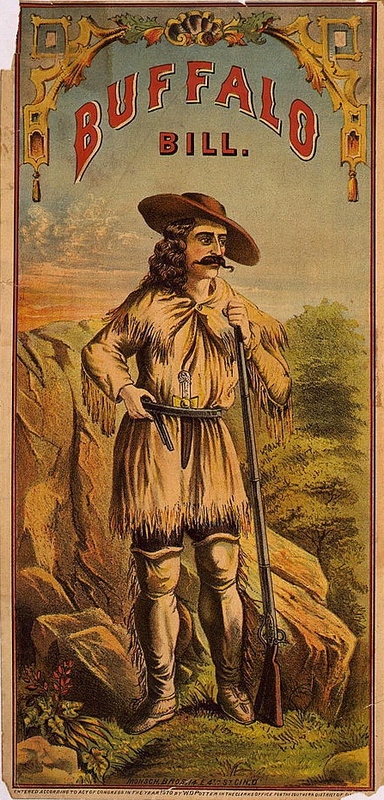The landscape has been changing for Indigenous people in film and TV, especially in the last several years. Indigenous artists are being recognized as more doors open. More resources are made available for them to tell authentic stories in their voices, ensuring their culture, history and people are portrayed accurately and to maintain the momentum of a storytelling movement that’s been going on for centuries.
The Value of Using Native Consultants from Tribal Nation Portrayed
Also, Romero said that a non-Native production should have a consultant who represents that tribal nation being portrayed.
Lacey Marie Abrahamson, who was a consultant on the Paramount+ series “1883,” said a lack of knowledge is the biggest mistake filmmakers and showrunners make when they don’t consult or involve the tribes and their citizens.
“Buffalo Bill’s Wild West Shows helped spread stereotypes about the ways Native Americans acted and dressed that later influenced Western films. In these shows, Buffalo Bill portrayed Native Americans as inhumane “savages” that terrorized colonists for little to no reason. He did this by creating various scenes that were performed in a way that a settler could be seen riding by, traveling with his families and the Native Americans would pass by on their horses and attack them.” (Native American Stereotypes in Early Films · Native Americans Then and Now · Nabb Research Center Online Exhibits, n.d.)

In these old Western Films, it’s a typical trope where we see the Native Americans dehumanized on screen to look wild primitive, when they were far from it in reality. There was this perception because of how Natives didn’t excessively use resources, the lack of technological advances, and how they traveled through like nomads. By portraying the Native Americans this way it could be used to justify the colonialism and genocide during that time and for the years following. There were also other reasons like the romanticization of nature, and the lack of indigenous representation.
“They do not do their research; they do not reach out to the tribes or the descendants to learn the true oral tradition of these stories, or even ask permission,” Abrahamson said. “They only tell stories taught in history books. Much of Indigenous history has been downplayed.”
When Indigenous languages are presented in movies, Rachel Mint Purget, an actress who played a dancer in all the dance scenes in “Killers of the Flower Moon,” said they can’t talk about Indigenous people without talking about their language, and it’s important they are accurate when spoken on film.
The Value of Using Native Consultants from Tribal Nation Portrayed
Also, Romero said that a non-Native production should have a consultant who represents that tribal nation being portrayed.
Lacey Marie Abrahamson, who was a consultant on the Paramount+ series “1883,” said a lack of knowledge is the biggest mistake filmmakers and showrunners make when they don’t consult or involve the tribes and their citizens.
“They do not do their research; they do not reach out to the tribes or the descendants to learn the true oral tradition of these stories, or even ask permission,” Abrahamson said. “They only tell stories taught in history books. Much of Indigenous history has been downplayed.”
When Indigenous languages are presented in movies, Rachel Mint Purget, an actress who played a dancer in all the dance scenes in “Killers of the Flower Moon,” said they can’t talk about Indigenous people without talking about their language, and it’s important they are accurate when spoken on film.
Romero said this growth is an indicator of the need, want and future of their narrative moving forward.
“People want to hear our side, people want to hear our story. They want to experience us and so that’s what’s happening and it’s really fantastic, it’s really exciting and I’m thrilled about it,” Romero said.
Red Nation Films is a motion picture company that releases independent films and they’ve made it their mission to amplify and authentically give a platform for the Indigenous people. They also have resources linked like the ‘Why We Wear Red’ which focuses on the glaring lack of inclusion of Native Women in Film & Television in all media. The other initiative is ‘Only One Water’ which is about sharing the Indigenous knowledge as water protectors and environmental stewards of this land and how that manifests on to the big screen bringing a global awareness to Mother Earth.

The desire to hear Indigenous stories is shared by many Americans. In 2018, a research project by First Nations Development Institute and Echo Hawk Consulting found that 78% of Americans surveyed believe “it is important to feature more Native American stories on TV, in movies and in other entertainment.” Also, 78% said they were interested in learning more about Native American cultures.
Sources:Kincanon, M. (2024, March 12). ‘It is our time now’: Native Creators Discuss Filmmaking Ethics and Positive Changes Being Seen in the Industry. FāVS News. https://favs.news/it-is-our-time-now-native-creators-discuss-filmmaking-ethics-and-positive-changes-being-seen-in-the-industry/
Native American Stereotypes in Early Films · Native Americans Then and Now · Nabb Research Center Online Exhibits. (n.d.). https://libapps.salisbury.edu/nabb-online/exhibits/show/native-americans-then-and-now/introduction/early-films
Red Nation Films – Red Nation Films. (2024, June 27). Red Nation Films. https://rednationfilms.net/




